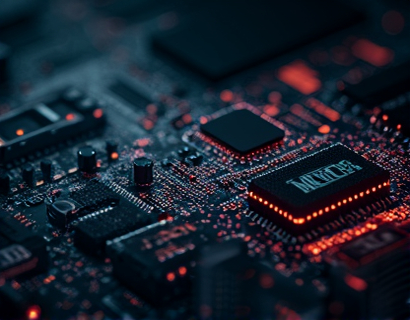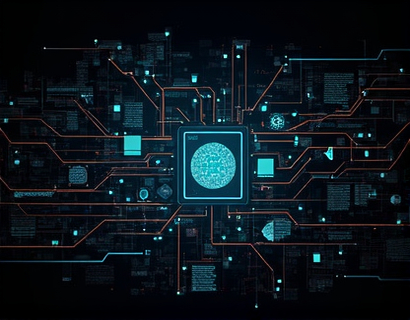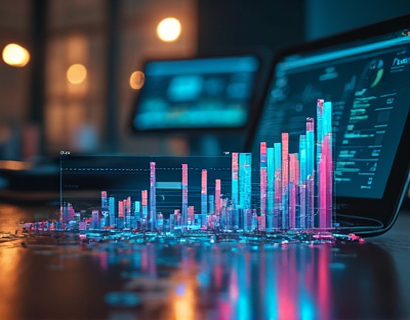Revolutionizing DeFi: Next-Gen Smart Contract AMMs for Optimal Trading
The decentralized finance (DeFi) ecosystem has experienced exponential growth over the past few years, attracting a diverse range of participants from crypto traders to institutional investors. At the core of this ecosystem are Automated Market Makers (AMMs), which have transformed the way liquidity is provided and trading is executed in decentralized markets. Traditional AMMs have evolved significantly, giving way to next-generation smart contract AMMs that promise enhanced efficiency, better liquidity management, and more sophisticated trading strategies. This article delves into the advancements in smart contract AMMs, exploring how these innovations are reshaping the DeFi landscape and offering unparalleled trading experiences.
Understanding Automated Market Makers (AMMs)
Before diving into the next-gen AMMs, it's essential to understand the fundamentals of AMMs. Unlike traditional order books where trades are executed based on price levels, AMMs use mathematical formulas to determine trade execution prices. The most common model is the Constant Product Market Maker (CPMM), where the product of the liquidity provider's tokens remains constant. This model eliminates the need for order books and allows for continuous trading without the risk of price impacts associated with large orders.
Traditional AMMs have been instrumental in bringing liquidity to decentralized exchanges (DEXs), enabling users to trade a wide range of assets without relying on centralized entities. However, these early AMMs had limitations, particularly in terms of liquidity efficiency and trading costs. The introduction of next-gen smart contract AMMs addresses these issues, offering a more robust and efficient trading experience.
Enhanced Liquidity Management
One of the key advancements in next-gen AMMs is the improvement in liquidity management. Traditional AMMs often suffer from liquidity pools being underutilized or over-leveraged, leading to suboptimal trading conditions. Next-gen AMMs employ dynamic pool resizing and adaptive liquidity allocation techniques to ensure that liquidity is always optimally distributed.
Dynamic pool resizing adjusts the size of liquidity pools based on market conditions and trading volume. When demand for a particular asset pair increases, the AMM can automatically allocate more liquidity to that pair, ensuring that traders have access to deeper markets. Conversely, during periods of low activity, liquidity can be reallocated to other asset pairs, preventing wastage and maintaining efficiency.
Adaptive liquidity allocation takes this a step further by using smart contracts to monitor real-time market data and adjust liquidity allocations dynamically. This ensures that liquidity is always where it's needed most, reducing slippage and improving trade execution prices. For instance, during high-volatility periods, the AMM can increase liquidity in volatile asset pairs to provide better trading conditions for users.
Improved Trading Efficiency
Next-gen AMMs significantly enhance trading efficiency through advanced routing algorithms and optimized transaction processing. Traditional AMMs often suffer from high transaction costs and long settlement times, which can be particularly problematic for high-frequency traders and arbitrageurs. Next-gen solutions address these issues by implementing more efficient routing mechanisms and streamlining transaction workflows.
Advanced routing algorithms analyze multiple liquidity pools and execute trades across the most favorable venues, minimizing slippage and reducing costs. These algorithms can also consider factors such as gas fees, transaction speeds, and market depth to optimize trade execution. This results in faster and more cost-effective trades, making DeFi trading more accessible and appealing to a broader audience.
Moreover, next-gen AMMs often integrate with layer 2 scaling solutions, such as Optimism and Arbitrum, to further enhance transaction speed and reduce costs. By offloading some of the transaction processing to these layer 2 networks, AMMs can handle a higher volume of trades without compromising performance. This is particularly beneficial for users who require low-latency trading and high throughput.
Sophisticated Trading Strategies
The next generation of AMMs is not just about improving liquidity and trading efficiency; they also support a wide range of sophisticated trading strategies. Traders and DeFi enthusiasts can now leverage complex financial instruments and algorithmic trading directly on the blockchain, thanks to the advanced capabilities of smart contract AMMs.
One such feature is the integration of derivatives and synthetic assets. Next-gen AMMs can facilitate the trading of synthetic assets, which are digital representations of real-world assets like stocks, commodities, or other cryptocurrencies. This allows traders to gain exposure to a broader range of assets without the need for physical ownership, thereby expanding the scope of tradable instruments in the DeFi ecosystem.
Another advanced feature is the support for algorithmic trading strategies. Users can deploy smart contracts that automatically execute trades based on predefined criteria, such as price movements, volatility levels, or market trends. These strategies can be as simple as a mean-reversion strategy or as complex as a multi-factor machine learning model. The flexibility and automation provided by smart contracts enable users to implement sophisticated trading tactics with minimal manual intervention.
Enhanced Security and Trust
Security is a paramount concern in the DeFi space, and next-gen AMMs have taken significant steps to enhance the security and trustworthiness of their platforms. By leveraging advanced cryptographic techniques and decentralized governance models, these AMMs ensure that user funds and transactions are protected against potential threats.
One key security feature is the use of formal verification and audits. Next-gen AMMs undergo rigorous code audits by independent security firms to identify and rectify vulnerabilities. Formal verification involves mathematically proving the correctness of smart contract code, ensuring that it behaves as intended under all possible scenarios. This level of scrutiny provides users with greater confidence in the security of their assets.
Decentralized governance is another critical aspect of next-gen AMMs. By allowing token holders to participate in decision-making processes, these platforms foster a community-driven approach to governance. Users can propose and vote on upgrades, bug fixes, and new features, ensuring that the AMM evolves in line with the needs and preferences of its users. This transparency and community involvement help build trust and foster a more resilient ecosystem.
User-Friendly Interfaces and Integration
While the technical advancements in next-gen AMMs are impressive, user experience remains a critical factor in their adoption. Next-gen platforms prioritize user-friendly interfaces and seamless integration with other DeFi tools and protocols. This ensures that both novice and experienced users can navigate the platform with ease and integrate it into their existing DeFi workflows.
Intuitive user interfaces with clear visualizations and step-by-step guides help users understand and utilize the advanced features of the AMM. Additionally, APIs and SDKs enable developers to build custom applications and integrations, expanding the ecosystem's capabilities and fostering innovation.
Integration with popular wallet solutions, such as MetaMask and Trust Wallet, ensures that users can interact with the AMM directly from their preferred wallets. This seamless integration reduces friction and makes DeFi trading more accessible to a wider audience.
Conclusion
The evolution of smart contract AMMs represents a significant leap forward in the DeFi ecosystem. By addressing the limitations of traditional AMMs, next-gen solutions offer enhanced liquidity management, improved trading efficiency, support for sophisticated trading strategies, and robust security measures. These advancements not only optimize the trading experience but also pave the way for new financial innovations and use cases in the DeFi space.
As the DeFi landscape continues to mature, the role of advanced AMMs will become increasingly crucial. They will serve as the backbone for efficient and secure trading, enabling users to fully harness the potential of decentralized finance. Whether you are a seasoned crypto trader or a curious DeFi enthusiast, the next-generation smart contract AMMs are set to revolutionize the way you interact with decentralized markets.











































